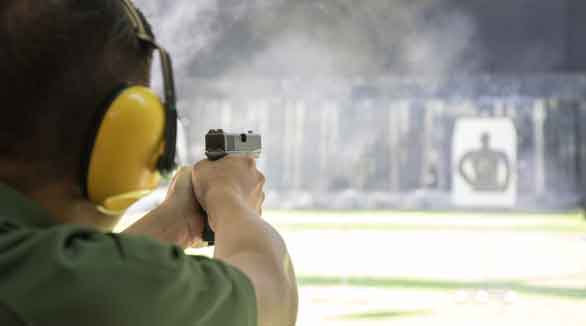I recently came across this article in the Beretta Blog and thought it would be a great introduction into the New Year, since we are getting ready to begin some continuing education training. We will start training our TriCorps officers in the area of firearms and defensive tactics beginning this month and continue throughout the year. I think the article does a good job discussing the reasons we add stress to our tactical skills training.
The Importance of Introducing Stress during Firearms Training In tense, uncertain, and rapidly evolving events, law enforcement/security officers must be able to function under stress.
Law enforcement trainers and firearms instructors know that not reacting to a threat can translate to death or great bodily harm for the officers, or others. For this reason, many law enforcement firearms training programs incorporate techniquesthat induce many of the same physiological symptoms that officers experience in such situations.
The Effects of Stress on Shooters
Watching police officers struggle during qualifications has provided some useful insights as to their source. Based on years of analyzing these shooters during both training and qualifications, it is safe to say that almost all failures are the result of one or more of the following deficits:
- A lack of familiarity with the use of their duty belt, firearm, and magazines
- The stress of timed shooting
- Lack of confidence in shot placement, (leading shooters to check their targets and look over their sights)
- Inability to perform reloads under stress
- Inability to clear malfunctions under stress
- Lack of awareness that the gun is empty
All of the aforementioned issues are negatively impacted by stress. If under normal conditions a shooter struggles with these areas, one can only imagine the results in a deadly force situation. When faced with any of the ‘hiccups’ listed, the response is typically that of shock and disbelief. Once they acknowledge what happened, shooters begin to address the obstacle. In stressful shooting situations, their response is almost always the same, they begin to shoot faster than their capabilities allow.
Stress Inoculation
Introducing stress to a firearms training program can help inoculate shooters against stress and preventing panic. Those who consistently train outside their comfort zones will be better able to handle the stress brought about by competition, and more importantly, deadly force encounters. There are several methods that shooters can use to artificially replicate or heighten stress during training. Which training method to use is many times dictated by the location of the practice. Some training methods are not conducive to certain locations. Some more common methods law enforcement officers use in training to increase stress levels include: physical exertion / cardio and strength training exercises, use of a shot timer, competition between officers, and reality-based training employing the use of airsoft, paintballs, or Siminition weapons, all the way to more complex simulators, like the Virta System (shoot-don’t shoot simulator. Whatever method is used, it is critical that proper safeguards are identified and followed.
Stress can be positive. It can result in physiological changes that bring out our best and it actually saves lives, if the individual has prepared. If they haven’t, they will likely experience distress and panic. This leads the individual to freeze, or in other words, become paralyzed with fear. Not reacting to a threat can endanger the victim. During critical incidents, mental focus hinges on the ability to overcome stress and respond to the situation as it unfolds.
I have traveled around the state teaching the ALERRT Active Shooter classes and have witnessed first-hand, the stress escalation when we begin the scenarios upon completion of the training. The design is to train the officers with techniques, concepts and principles, then put the officers to the test with role players. It becomes a whole other process when you are expected to locate and stop the bad guy, especially when he is firing at you with simunition guns! While we will provide good training to get our officers prepared for the challenges we may have to face, it is critical to remember that— Training is Your Responsibility
I strongly encourage everyone to train as often as you can, but make sure the training will help prepare you for battle. If it doesn’t, you are wasting your time and ammunition! Stay safe and keep your mind in the game. Talk to you next month!

